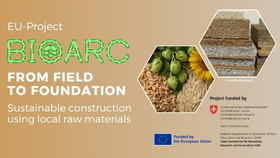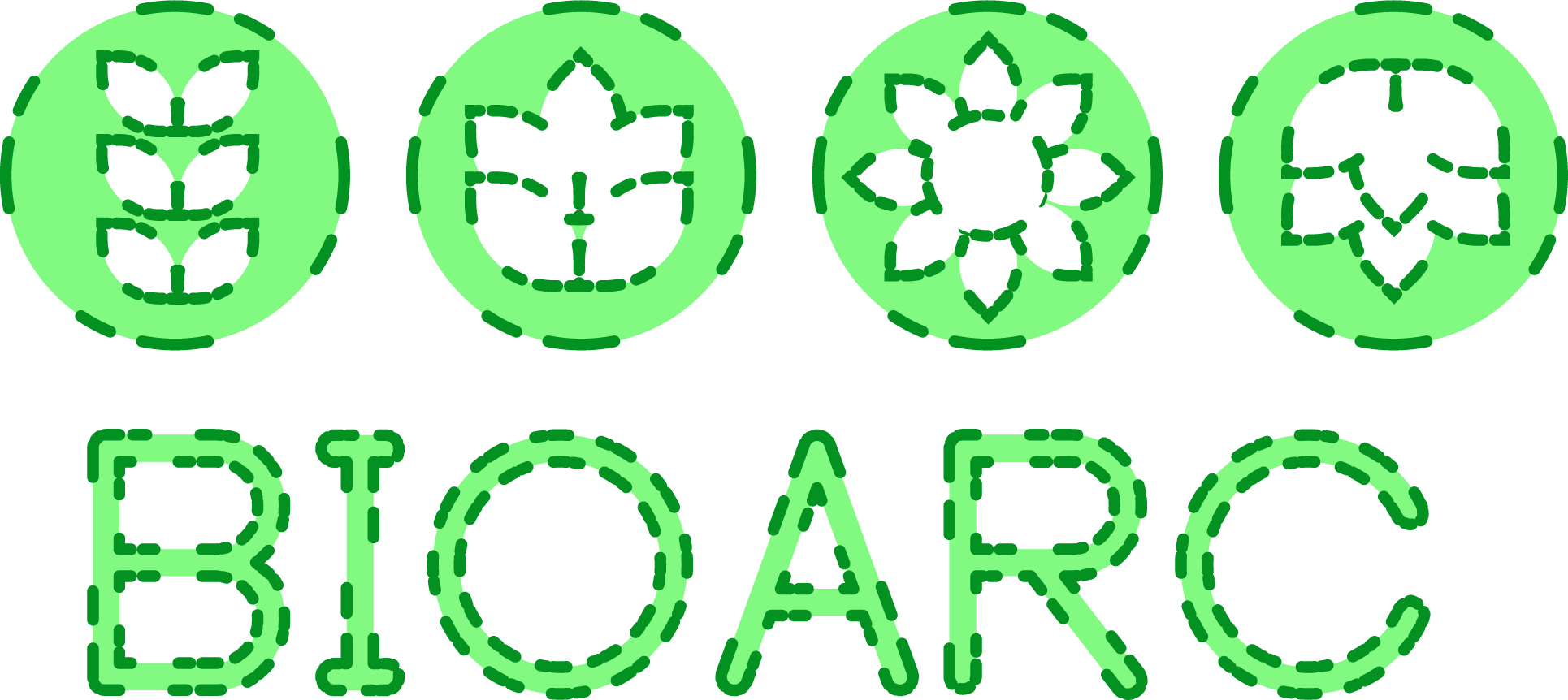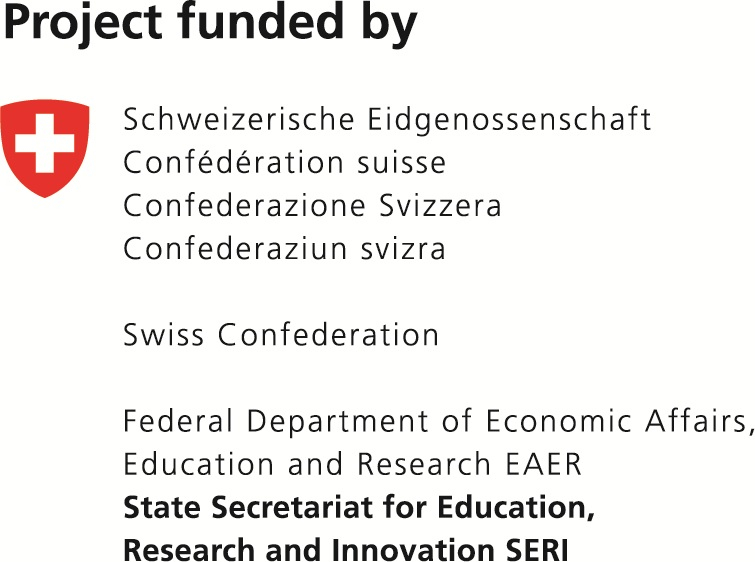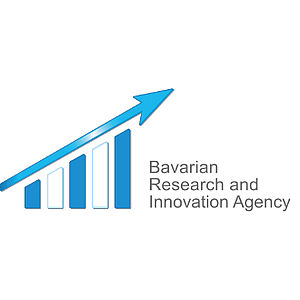
BIOARC

EU-Project BIOARC
From field to foundation: Sustainable construction using local raw materials
In the EU, buildings account for around 40 percent of energy consumption and 35 percent of energy-related greenhouse gas emissions[1]. If the goal of climate neutrality is to be reached by 2050, buildings’ overall energy efficiency must be improved. Accordingly, the European Union’s Energy Efficiency Directive calls for a reduction in residential buildings’ primary energy consumption of up to 22 percent by 2035. Bio-based materials offer promising potential for the construction sector and comply with the principles of the circular economy. However, some of these materials have considerable limitations, including insufficient fire resistance.
The aim of the EU project BIOARC is to convert regional, unused waste from agricultural production such as rice husks (Italy), wheat straw (Poland), hop fibres (Germany), and sunflower seed husks (France) into durable, high-quality, and fire-resistant building materials that can be used in insulation, wall and acoustic panels, as well as in modular partition walls. They will be tested in four different European bioregions[2] as prototypes in real demonstration environments, including, 1:1 models, and community pavilions. The idea is to involve local communities, farmers, designers, and policymakers in each bioregion, with the aim of jointly developing building materials that are culturally relevant and widely accepted at the local level. In each bioregion, the “bioregional weaver” – a locally active mediator who ensures that each prototype considers the respective region’s aesthetic, ecological, and economic context – plays a central role. This role will be performed by a designer and materials scientist, who will contribute to these local networks through protracted periods of residence in each of the project’s bioregions.
Using bacteria to create stable, sustainable building materials
For the production of ecological building materials, BIOARC aims to combine microbially induced calcite precipitation (MICP) with an innovative green moulding process (CrescoBind™) – a new and scalable approach for the sustainable production of building materials.
What is microbially induced calcite precipitation (MICP)?
MICP is a natural process in which bacteria produce calcium carbonate precipitates (lime). This process is used to consolidate and stabilise materials or to produce sustainable building materials – entirely without cement or chemical adhesives.
Certain bacteria, including Sporosarcina pasteurii, are injected into a material such as sand, soil, or plant fibres. In certain culture media, these bacteria can produce calcium carbonate.
The calcium carbonate binds the plant fibres together naturally – without synthetic bonding agents. The resulting mass is then placed in a mould, where it hardens at room temperature. The result is a strong, biodegradable, and fire-resistant material that can be used to make building components such as insulation boards and wall panels.
Current technical challenges with MICP
Although the standard MICP process works in principle, it faces several technical challenges that make it difficult to scale up for volume production.
The dwell time of the material in the mould is problematic. The cementing process usually takes 4–10 days, which slows down production considerably. The moulds themselves are also quite complex – they have to be sealed under pressure, allow an even distribution of the cementing solution, and be equipped with inlets and outlets for the flow of liquid.
The process requires a pressure-pump system to force the cementing solution through the moulds. This increases technical complexity, energy consumption, and ultimately also cost.
Bonding is often not uniform. Areas near the inlet, where the solution enters the mould, are often cemented more strongly, while other areas do not bond as well.
The process becomes even more difficult when producing more complex shapes. Some parts of these shapes are not sufficiently supplied with the cementing solution, resulting in weak points or even a complete lack of bonding.
BIOARC combines MICP with the innovative green moulding process CrescoBind™
In this green moulding process, the first step is to produce a biodegradable “green body”. This preformed shell made of pre-binder (such as gypsum), centrifuged bacterial paste, and agricultural residues encloses the material substrate and keeps it lightly bonded. The shell can be customised and adapted to regional architectural preferences. Bacteria then solidify the moulded body as part of the MICP process.
Unlike conventional MICP processes, the combination of CrescoBind™, developed by the British company Cresco Biotech Ltd, and MICP requires no pump systems or pressure-tight moulds. The material’s fine pore structure allows the curing solution to spread evenly. This shortens curing time, reduces energy consumption, and cuts costs.
For both phases of the project, BIOARC will be making use of locally available agricultural residues. In the green moulding process, these will be used for the pre-bonded outer shell of the material. In the MICP process inside the mould, they will serve as a substrate and nutrient source for bacterial growth.
Creating bioregional value for a climate-friendly transition in construction
BIOARC relies on a bioregional approach, emphasizing the use of locally sourced biomass. This strengthens the regional economy, creates sources of income for farmers, and promotes new business models and jobs. At the same time, transport routes, CO2 emissions, and costs are reduced.
By integrating bio-based materials into sustainable construction concepts, BIOARC is playing an active part in the “New European Bauhaus” initiative, contributing to the goals of the European Green Deal, and helping to create a climate-friendly circular economy in the construction industry. The result will be a model for regenerative architecture in Europe and beyond.
[1] Energy Performance of Buildings Directive adopted
[2] A bioregion is a part of the Earth’s surface whose rough boundaries are determined by natural and human influences, and which differs from other areas by characteristics of flora, fauna, water, climate, soils, and landforms, as well as by the human settlements and cultures that produce these characteristics. (Source: Wikipedia)



Project goals
- Standardise the MICP biomineralisation process so that it works reliably and on a larger scale for the production of materials from various local biomass types.
- Produce four different products – insulation panels, wall panels, acoustic panels, and partition walls – using four different materials from local bioresources.
- Identify promising applications for bio-based products and evaluate their scalability and market suitability in various sectors.
- Establish regional networks with local stakeholders to strengthen sustainability, adaptability, and knowledge exchange in the bioregions.
- Promote regenerative architecture and sustainable urban design through bio-based materials in the spirit of the New European Bauhaus.
Target groups
- Stakeholders from the agricultural sector
- Construction companies
- Other companies/SMEs
- Research institutions
- Policymakers
- Stakeholders from the circular economy
BayFOR as a partner
During the application phase, BayFOR supported the coordinators and the consortium in the technical and content-related design of the EU application and and in clarifying financial and administrative issues. BayFOR is a project management partner in the BIOARC consortium. BayFOR also coordinates collaborations and clustering activities. It evaluates opportunities for cooperation, identifies overlaps, and initiates joint activities and workshops in which synergies are created with regard to regional, national, and European funding and financing opportunities.
Funding period
This project will be funded from early May 2025 to late April 2028 by the European Union's Framework Program for Research and Innovation, Horizon Europe, with approximately € 3.9 million under grant agreement no. 101215956. Of this, € 1.5 million will go to stakeholders in Bavaria.
Consortium
Coordinated by the Technical University of Munich, 12 partners from 8 countries are participating in the project:
- Technical University of Munich, Germany
- BarthHaas, Germany
- Bavarian Research Alliance GmbH, Germany
- Cresco Biotech Limited, United Kingdom
- FOODCULTURE days, Switzerland
- InnoRenew CoE, Slovenia
- INNOVATECH SRL, Italy
- InoSens, Serbia
- Terres Inovia, France
- University of Northumbria (Newcastle), United Kingdom
- VestaEco, Poland
- WeLOOP, France
Further informationen
Website coming soon.
Contact
Project coordinator

Prof. Niklas Fanelsa
Technical University of Munich
Professorship of Architecture Design

M.A., Dipl. Julia Ihls
Technical University of Munich
Professorship of Architecture Design
Email: julia.ihls@no-spam-pleasetum.de
Contact at BayFOR

M. A. Verena Bürger-Michalek
Head of Unit Project Management
Phone: +49 89 9901888-174
Email: buerger@no-spam-pleasebayfor.org

M. A. Susanne Hirschmann
Scientific Officer Environment, Energy & Bioeconomy
Phone: +49 89 9901888-125
Email: hirschmann@no-spam-pleasebayfor.org




